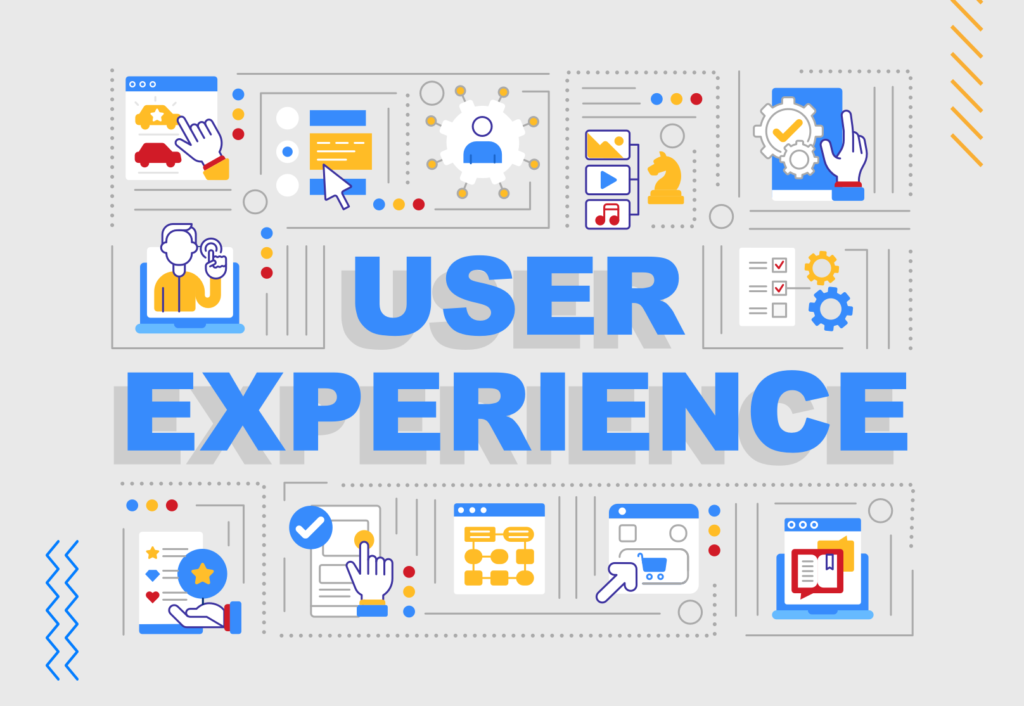The Salesbook Formula. Everything you need to know about the complete sales process
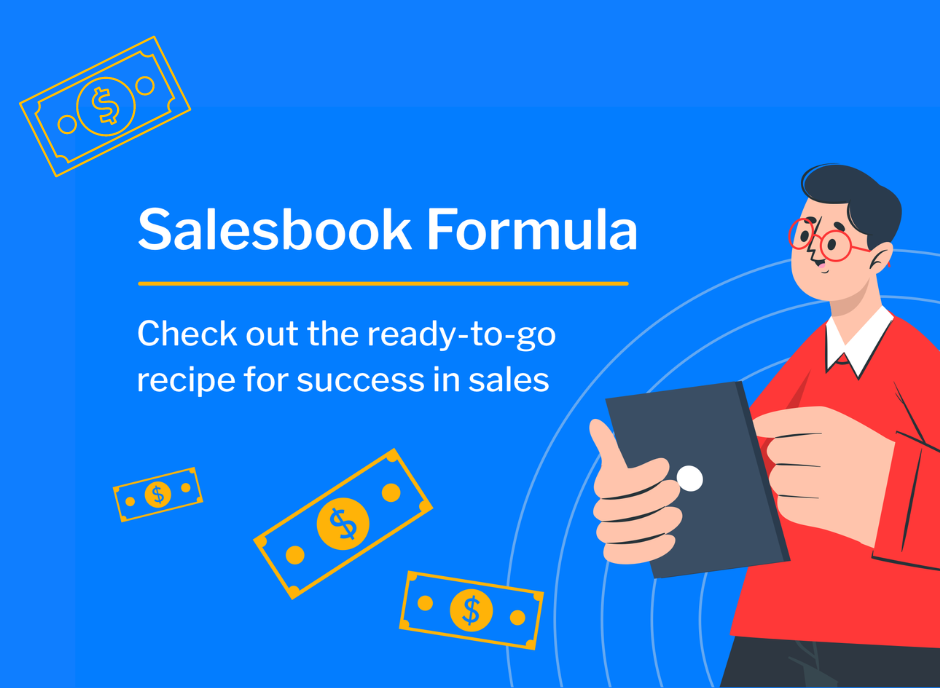
Probably everything has been already written about the sales process. The Internet is flooded with articles and strategies but you know that all of this is just a toe in the water. The truth is, all these wise books and articles are of no use if their value is solely based on theorizing.
In Salesbook, we know that your time is money, and sales are about decisive action. That is why we have created the Salesbook Formula.
It is a ready-made blueprint for sellers who are looking for effective solutions that bring real results. You will not find complicated considerations on the philosophy and history of sales in it.
The Salesbook Formula is a ready and proven sales process supplemented with information on the necessary tools and data you need to be successful in sales.
As Zig Ziglar wrote:
“Success is the maximum utilization of the ability that you have”.
And you just get these new opportunities on a silver platter.
What will you find in this article?
- What is the Salesbook Formula?
- How modern sales look like
- The biggest challenges in sales
- Why is consultative sales still needed?
- How to catch up with e-commerce? Let’s talk about the sales process
- Salesbook Formula as a sales process
- Summary
- Check what Salesbook can do!
What is the Salesbook Formula?
The Salesbook Formula consists of the three most important pillars in sales. They are:
- process,
- tools,
- data.
The whole is a ready and complete sales methodology for sales teams.
We have created it for sales representatives working in industries that use consultative sales, i.e. those in which the knowledge of specialists is necessary to create an individual offer and close the transaction. The effective sales process we propose will work both in B2B and B2C.
The Salesbook Formula is a universal formula that aims to bring the quality of consultative sales closer to e-commerce standards. It is a holistic approach to the topic of the process of selling complex products, which is already an international standard.
But before we introduce the full concept to you, let us talk a bit about the biggest challenges modern sales department faces and why we believe the consultative sales will always be the thing.
How modern sales look like
On the one hand, the Sars Cov-2 pandemic has made e-commerce grow very fast, on the other hand, we still have products on the market that need to be explained. Their independent purchase is difficult or even impossible because the customer is not able to make the right decision without specialist knowledge.
Such situations are commonplace in industries such as photovoltaics, automotive, industrial automation, insurance, and even marketing – wherever potential buyers need expert support in choosing the right product or service.
While e-commerce naturally adapts all technological innovations, consultative sales very often stands still. In many cases, the pinnacle of achievements in this field is the implementation of the CRM system in the company, and let’s agree: this is only the tip of the iceberg of available opportunities.
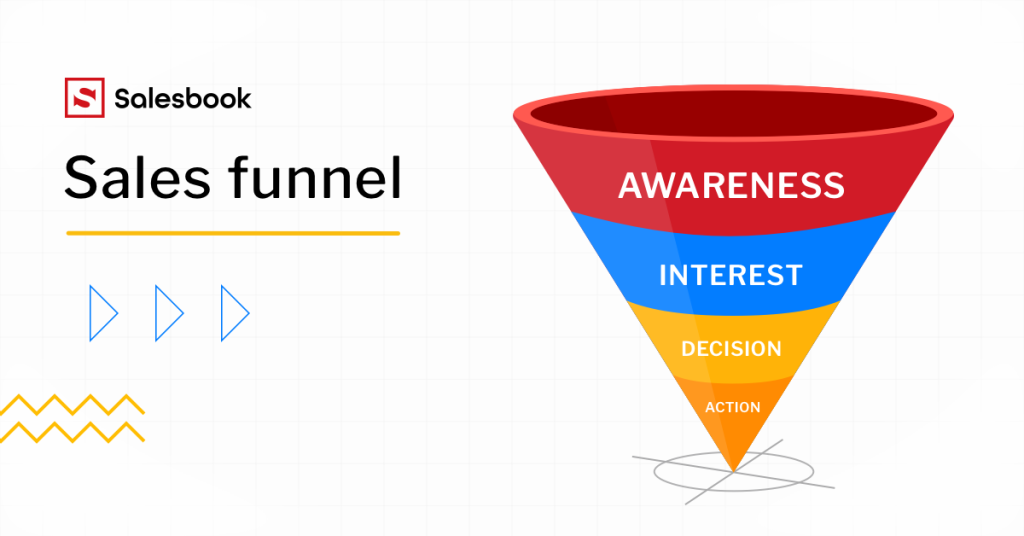
The biggest challenges in sales
From year to year, more and more challenges are piling up before modern sales. They are generated by both external and internal factors.
External factors include all events that shape the market independently of sales reps, such as a pandemic with all its economic consequences, or the development of new technologies.
Internal factors are related to the situation in the company, and more precisely, decisions and actions (or lack thereof) that directly affect the functioning of the sales team and related departments. These include the lack of an own sales process, the lack of basic tools, and incompetent data analysis.
Customer Experience is king
When talking about the challenges that the market multiplies before sales reps, we must remember that just as sales changes, so does consumer behavior.
And although the fact that a potential customer has easier access to information and is able to better define his needs, it is often the cause of problems.
According to a report compiled by Hootsuite in January 2021, 59.5% of people in the world have access to the Internet. And this gives them unlimited access to information on any topic just with the help of a smartphone.
Increased customer awareness is related both to what products our competition offers, but also to how it offers them. In the eyes of customers, the product is increasingly becoming only an element of the sales process. Now, what counts is the opinion of other users, philosophy, and what values the company represents, as well as how it deals with conflict situations, such as complaints or service.
The ease of contact with the company’s representative and the response time to the notification are also important. It is all part of the so-called Customer Experience.
Today, a good product and a low price are not enough to satisfy the customer. The sales rep needs to deliver the best meeting experience, and it’s not always as easy as it may seem.

Supply chain disruptions
The pandemic had a huge impact on the economic situation of the entire world. The consequence that reached us late are breaks in the supply chain that have an unimaginable impact on sales.
Distributors must re-develop the purchasing strategy and make the processes related to the storage of an appropriate product buffer more flexible in order to maintain the continuity of supply, and thus a stable level of sales.
The pandemic will strongly verify the market and probably only those who choose new technologies and effective sales processes at the right moment will remain there.
Lack of proper tools to support the sales team
Consultative sales today are often rusty. It lacks the freshness and modern style that e-commerce offers. Many companies believe that if something works, it is better not to touch it.
Following this path, a new employee – when starting work in the sales team – gets the starter package: a car, computer, and login to the CRM system, to which he is obliged to enter data on the acquired customers. He only hears from the manager that he should focus on cold calling and cold mailing in the sales process.
It is a bit like putting the driver in a Toyota Prius at the Formula 1 Grand Prix and expecting results similar to the McLaren driver. Even the best driver, if he does not receive the right tools, will only wipe the dust from the windshield that his competitors leave behind.
When do we know the tool is suitable? When it is flexible, easy to use, intuitive, and technologically advanced enough to help automate those elements of the sales processes that unnecessarily consume the seller’s time.
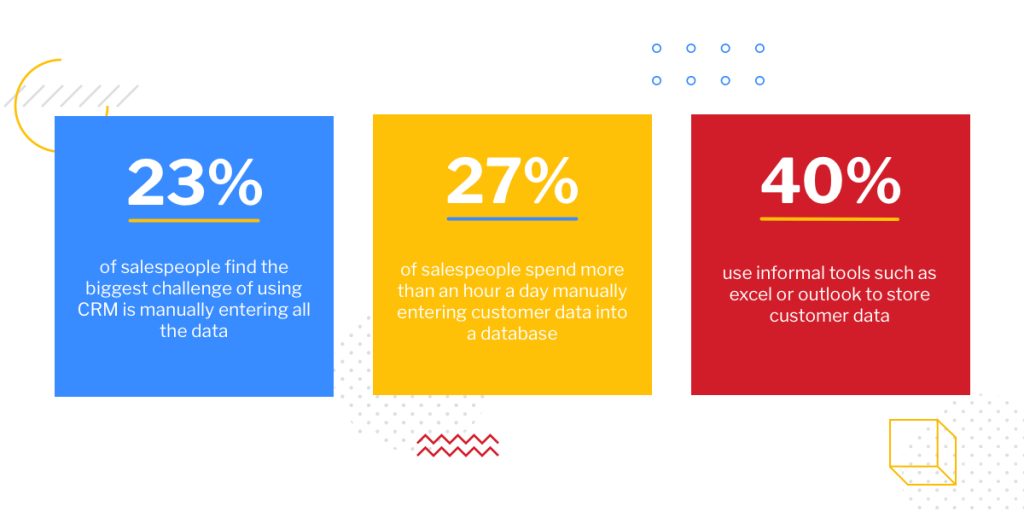
The sales process is like a Yeti
But the lack of tools is not the only problem for sales teams. What blocks their development is, first of all, the lack of an understandable and effective process. Unfortunately, for many managers and sales reps, the sales process is still like a Yeti – everyone has heard of it before, but no one has seen it and we are a bit afraid to meet it.
When we come across a company that is not afraid of Yeti, it often turns out that as many sellers are there, so many processes exist in the company. Each sales rep works according to its formula and methodology, and the data in the system is completed according to individual criteria.
This causes organizational chaos, especially if there is no CRM in the company. An attempt to analyze any data, combined with the lack of a consistent and standardized sales process, can give many managers a headache.
Lack of high-quality data analysis in the sales process
The problem of the lack of qualitative data analysis can be divided into two variants.
In the first variant, the problem is mainly the lack of any data analysis. Manager and sales team collect data for CRM out of habit. It also often turns out that the data is incomplete or incorrect.
The sales manager limits the analysis of data related to the sales process steps jut to check whether the target has been achieved and what increase in revenues was recorded by the sales department compared to the previous year’s results.
As long as the Excel table is green, the topic is closed. However, we cannot speak of any real analysis here.
In the second variant, the sales team only analyzes the basic data. Managers add up the values of each stage of the funnel, focusing only on the amounts and number of contracts signed. The created recovery plans are limited to the slogan “Close what is hanging in the system”. Such an analysis is completely ineffective and too superficial to diagnose the actual condition of the sales department.
Unfortunately, both variants are an ambush that – ironically – the sales departments set for themselves.
The situation becomes complicated when it turns out that sales results drop drastically and our best salespeople move to our competition.
Then it turns out that no one in the company knows what elements of the sales process work, what are the most common sales process mistakes made by sales reps, how many times an effective sales meeting lasts, and what sales materials are most often viewed by customers.
So begins the witch hunt and the search for those to blame where there are none. And all you had to do was to wisely analyze qualitative sales data.

HR challenges vs the sales process
A committed and qualified sales team plays a key role in any consultative sales company. The problem is that it is more and more difficult to find such employees who understand that in order to achieve better and better results, it is necessary to optimize sales activities, analyze all available data and on this basis improve the sales process, using the most modern tools.
The reluctance of sales reps to learn new things and automate work is often due to uncertainty, fear and ignorance. Managers’ task is to explain to employees how automating some repetitive tasks included in the sales process will increase their efficiency, and thus their results and earnings.
The dizzying pace of e-commerce
E-sales mistakenly builds the belief that everything can be bought and sold at the pace of e-commerce. Many consumers expect that buying a bottle-making machine will be as simple as buying shoes on eBay.
The advantage of consulting sales, however, is not its pace, but the level of specialization. In order to buy the right engine for the machine, you need to consult an expert and carefully check the parameters of the ordered product in many respects.
Buying such an engine in an online store without meeting a specialist could end up with e.g. paralysis of the production line or damage to the entire machine and cause a lot of stress for the customer.
This does not mean that it is impossible to increase the pace of consultative sales. All you need to do is choose wisely the tools that will support sales reps, automate processes and allow you to use the saved time to acquire new customers or build relationships with those you already have.
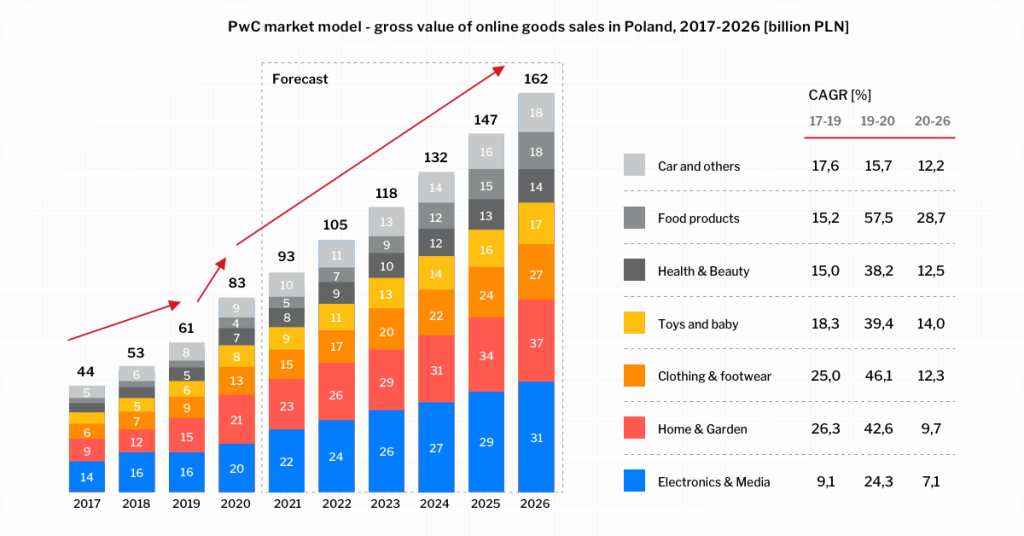
“I take your word for it”. Said no customer ever
The sales teams also face a huge image challenge. We live in times when nearly 60% of the world’s population has access to the Internet. This gives you endless possibilities when it comes to searching for information on any topic.
A report conducted in 2021 by the Edelman portal shows that just over 60% of society trusts entrepreneurs. And it is not only about competency-related trust but also about ethics. No wonder a potential customer is very interested in the company’s achievements so far and opinions about it.
During the sales meeting, the customer must see evidence that the company is trustworthy and that the product works for other users. References and sample projects are something that is valuable argument during a business conversation. That is why it is so important how sellers present information about the company and product or service during meetings with customers.
Today, when in social media we only have about 3 seconds to hold the user’s attention, it is very similar in the sales processes. The message must be visually attractive and make our interlocutor so intrigued that he or she wants to spend time learning about the details of the offer.
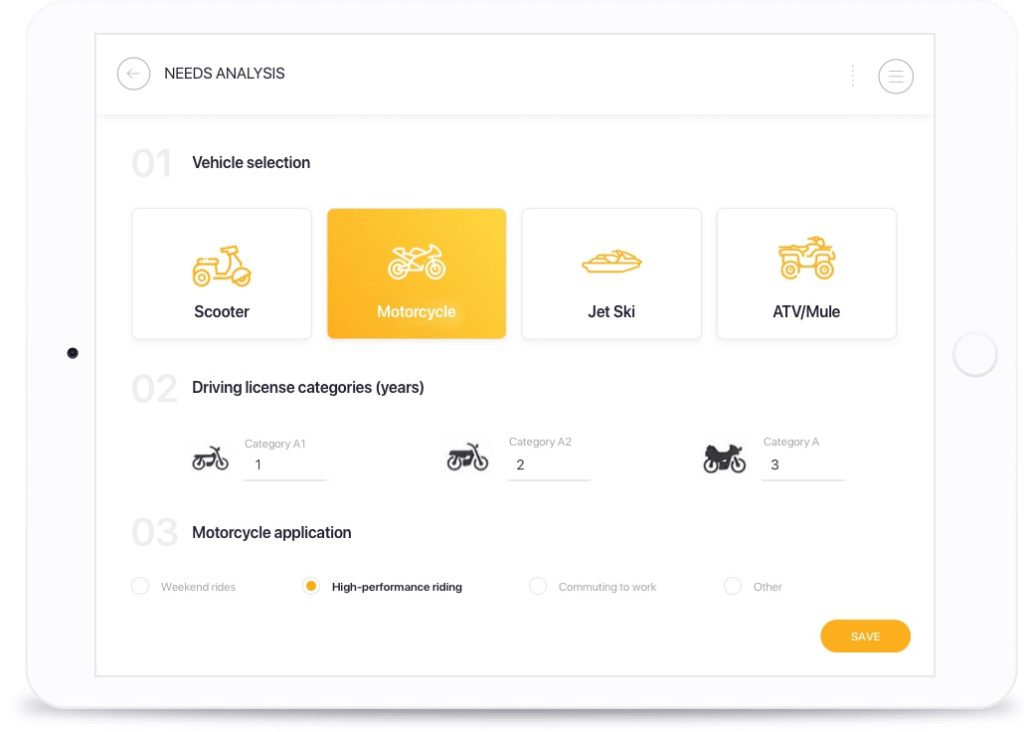
Why is consultative sales still needed?
Consultative selling is standard. Although the development of e-commerce has simplified the purchasing processes for some products, there are still many industries and solutions on the market, the purchase of which requires the knowledge and experience of sales professionals.
This is the case, for example, with the sale of heat pumps, photovoltaics, AC, insurance, and agricultural machinery or even windows.
Where the configuration of the final offer depends on many factors, the participation of an external specialist who will help the client solve his problem in the best way, and guide him through the entire sales process is still irreplaceable.
Consultative sales can be compared in this case to hiring a specialist (seller) from the supplier’s company for a specific project. With complicated and complex products, the expert’s knowledge is needed both at the level of product configuration, offer creation, and implementation. This element is certainly missing in e-commerce, which is focused on selling with one click and shortening the shopping path as much as possible.
The obvious differences between e-commerce and consultative sales do not determine that consultative sales cannot technologically keep up with the changes in the sales process that are progressing from year to year.
In order to maximize the potential of the sales team, it is necessary to provide them with tools that will allow, above all, to automate repetitive activities that unnecessarily consume time.
A clear division into individual stages of the sales process, automatic data filling in CRM during the meeting, generating a document with an offer based on a completed customer survey, follow-up activities, and creating reports are just some examples of what the appropriate tool can do without the seller’s interference to improve a specific stage of the sales process.
Such improvements generate real profit for the entire company, saving time for the sales team employees and creating a transparent and standardized sales process.
How to catch up with e-commerce? Let’s talk about the sales process
The sales process is more than just an idea of how your company’s salespeople are supposed to sell. The free market, in addition to offering countless sales opportunities, also multiplies the number of competitors in your backyard.
In addition, e-commerce is growing at a rapid pace and, pushing the boundaries of what can be sold over the Internet, is sweeping out of the market those who are not prepared for the new reality.
And although the position of consultative sales seems to be unquestionable in some industries, prudent sales managers should now analyze which elements offered by e-commerce to adapt to their sales processes in order to be successful and not to be left behind. This is what characterizes modern sales.
So what is the sales process? It is a path made of repeatable and universal steps that must be followed in order to finalize the transaction with the client.
As Andreas Pfluger said:
“We cannot change the wind direction, but we can set the sails differently.”
To go with the wind of changes in sales, you need an effective plan divided into specific stages of the sales process, complemented by the right tools and data.
The Salesbook Formula is this ready-made blueprint.

Salesbook Formula as a sales process
The Salesbook Formula is a process that is proven and results from the experience of thousands of sales reps using our platform. As Robert Kiyosaki used to say:
“If you want to go somewhere, it is best to find someone who has already been there.”
So check who has trusted us so far. (click here)
The implementation of the Salesbook Formula increases the efficiency in the sales department by an average of 53%, which means more meetings, more leads and more sales.
What Salesbook Formula offers to achieve such an effect are three elements:
- process – ready, planned for the most important stages, although with the possibility of personalization,
- connecting IT tools to each stage of the process – they have two functions: they support the entire process (i.e. sales reps, managers, marketing people) at every stage, but also control its implementation,
- data (insightful and accurate set of information on the quality of activities at each stage of the process).
The sales process map built on the basis of the Salesbook Formula is divided into 7 individual stages:
- PRESENTATION,
- NEEDS ANALYSIS,
- OFFER,
- CONTRACT,
- AUTOMATION,
- CRM,
- ANALYTICS & AI.
So let’s break down the various stages of the effective sales process steps into prime factors.
Presentation
A package of important marketing and sales materials is a key tool for the efficient finalization of the sales process. The image speaks to our interlocutor much more effectively and helps explain complex documents to potential clients, especially when these are the first meetings.
That is why this stage of the sale is so important. Thanks to it, the sales rep is able to prepare a sales pitch, perfectly match sales supporting materials during contact with the client and convince him to sign the contract.
Moreover, average salespeople equipped with the tools and materials that are used by the salespeople with the best results are able to achieve similar sales results. Standardizing the sales process flowchart allows average employees to educate themselves faster and achieve better results, so it ultimately increases the effectiveness of the salesperson.
The first impression can only be made once – especially when meeting with a decision-maker. The seller must therefore receive attractive and up-to-date marketing materials from the company that will help him to keep the customer’s attention for longer and convert qualified leads into clients.
Thanks to the Salesbook, the sales department employee has constant and unlimited access to all prepared materials and can freely present them during a sales meeting, all from the iPad level.
The biggest advantage of Salesbook at this stage of the sales process is that it allows you to strengthen your sales pitch, present the history and the most important achievements of the company, and even photos of the team or production hall in a flexible and accessible way for the customer.
This solution guarantees that the company’s representative will be able to show the client sales presentation, positive reviews or even a website during the visit, without the need to write an e-mail or arrange another meeting. It saves a lot of time.
In response to questions regarding, for example, references, he will be able to present ready-made reports on implementations so far.
A sales representative also has the opportunity to create his own online business card, in which he can include all the most important information about his achievements and competencies. This is the absolute basis that allows you to build trust and a professional image of an employee, all in a visually attractive form.
The application also offers the option of screen sharing in the case of remote meetings, and the aesthetic layout ensures a high level of customer experience.
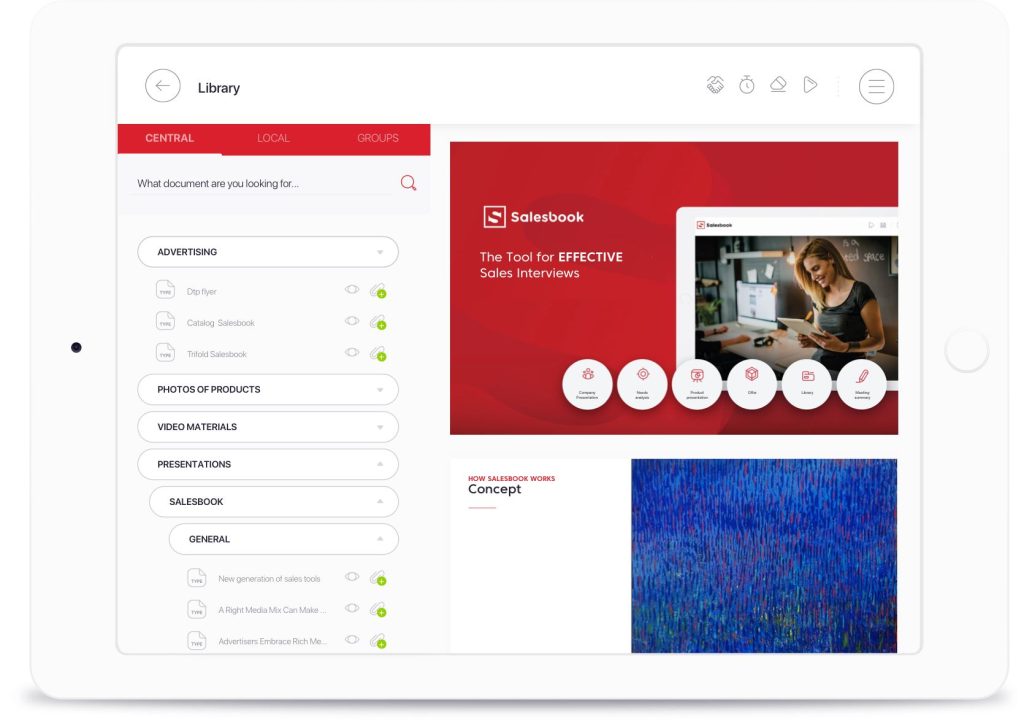
Customer needs analysis
According to CSO Insights and Gartner research, in complex B2B buying process, more than half of sales opportunities end up with a lack of a potential customer’s decision. In some companies, even an unfinished sale becomes a tendency more often than a loss with the competitors.
Why is this happening? Very often, the reason for such a state of affairs is a missed offer, which does not meet the client’s expectations and does not meet his needs. What you have to to do is to get into your customer’s shoes and fully understand the customer mindset.
Finding and defining the so-called pain points are one of the most important stages of the sales process. The success of the transaction will be largely based on whether our employee will make full use of the business conversation and accurately discover what the customer’s problem can be solved in his company with the use of the offered product.
Staying in the dark and misdiagnosis will likely lead to customer frustration and wasted time on both sides. Tools such as product and price calculators, comparison of competitors’ offers or interactive surveys are a guarantee of obtaining relevant data on the client’s needs and making an accurate diagnosis.
The more valuable data the salesperson collects in the early stage of the meeting, the greater the chance of setting up the perfect offer during the sales meeting.
The Configure Price Quote (CPQ) mechanisms implemented in Salesbook allow the seller to efficiently and precisely examine the needs, while maintaining a very high visual standard.
Thanks to the tools built into the Salesbook, sellers can calculate, for example, the return on investment in photovoltaics or a heat pump or the amount of the insurance premium during the sales meeting.
Thanks to this solution, customers do not have to wait for an e-mail with information that will help them make a reasonable purchase decision, and the seller does not waste time creating additional calculations after the meeting is over.
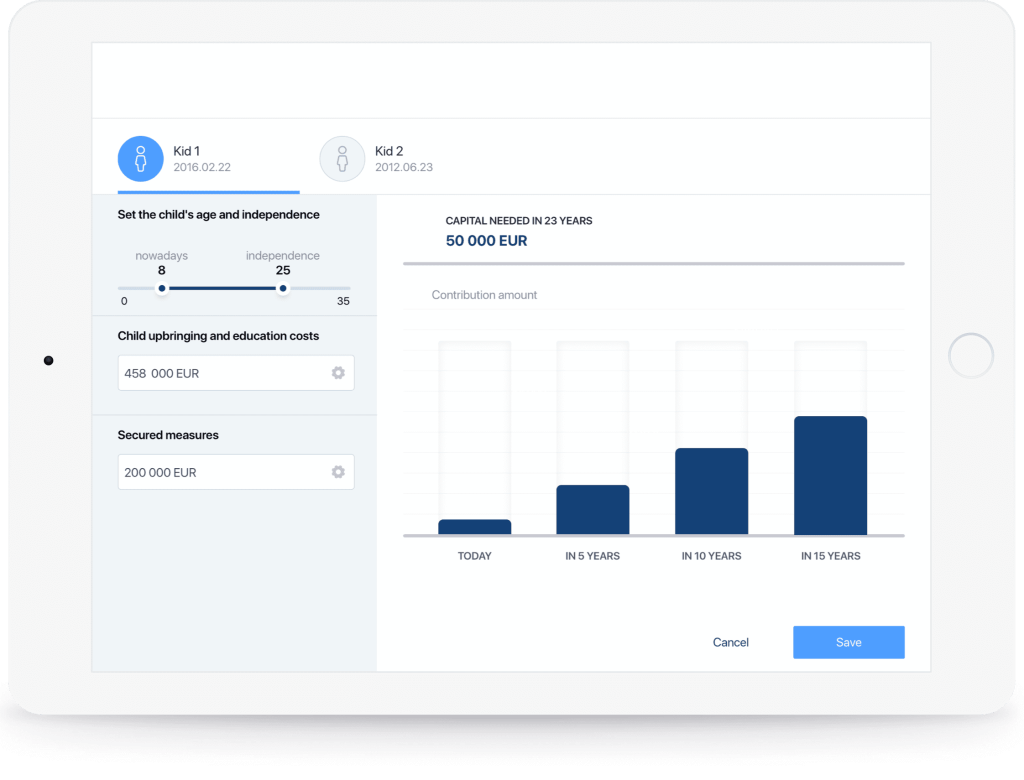
Offer
The sales process consists stages that require special attention from the sales rep. One is the client-side analysis of the offering document. Sellers often mistakenly focus only on sending an offer, and ignore additional effectiveness-enhancing activities.
The key to success at this stage, however, is interacting with potential customers in the offer creation process. If you involve the client in the offer configuration process, using visually attractive calculators or questionnaires, you will automatically build a sense of responsibility for the final shape of the offer document.
Another threat looms on the horizon. For salespeople who meet with clients away from their office, there is a high probability that some of the information they have collected during the visit will simply be forgotten by them before they create an offer.
Exhaustion caused by a trip, meeting, or even lack of sleep may result in the fact that after returning to the office, our sales representative – when creating an offer – will unknowingly skip some nuances that customers mentioned during the meeting. This will have consequences that could eventually close the way to finalizing the sale.
Salesbook allows salespeople to avoid such situations. Even during the meeting, it will help you generate an offer for the customer along with all the materials that he considers important in the purchasing process.
When the business conversation ends, the application automatically sends the file with the offer to the customer. This reduces the probability of missing important aspects for the client to zero. Our employee does not have to worry about where to stop in order to fill in the data in the CRM as soon as possible.
Using the Salesbook, an employee during a meeting with a potential client may, among others:
- create a detailed calculation for the offer,
- place an order directly at the distributor,
- manage discounts and gratuities to increase profits,
- send the prepared offer to the client.
And all this with the support of a tool that automates all these elements and sends the collected information and files to CRM in real-time.
After such a meeting, the employee does not have to return to the office, complete the data in the system, rewrite notes, and generate offers based on what he remembers from the meeting.
All activities are automated, the customer receives an offer directly to his e-mail or SMS in the form of a link, and the seller – instead of wasting time – can take care of his other customers immediately.

Contract
The most important and at the same time the most hated adage among sellers is “Forge iron while it is hot”. It is impossible to argue with the fact that if the seller during the meeting with the customer accurately and quickly defines the main pain points and needs of the customer, the probability of closing such a transaction will increase significantly.
Additionally, the emotions accompanying a successful sales meeting are the seller’s greatest ally.
A common mistake many people working in consultative sales make is letting the customer’s emotions and enthusiasm cool down.
How is it possible that most salespeople deprive themselves of the opportunity to close a sale at their own request? The problem here is an underdeveloped process and the lack of appropriate tools that would allow the seller to close the transaction during the meeting.
So, Salesbook Formula defines this as a key sales stage in the standardized sales process. The customer has just received a solution to the problem from the seller, he is satisfied with it and he is excited about the vision of ending the search. This is the best time to close the sale and proceed with the project.
Of course, in the case of B2B sales, not every sale can be finalized in this way due to internal procedures and decision-making processes existing in the client’s company. However, in the case of B2C, the probability of signing such a contract increases drastically, because the seller has direct access to the only decision-making person.
If the salesman manages to close the sale at the same meeting, Salesbook will allow him to generate the contract on the iPad. The customer can sign it with an iPencil or even a finger. A signed contract with all attachments is automatically sent to the customer, and the information is saved in the CRM.
The only thing left to do is deliver the order and prepare an invoice. The sale is closed and the sales rep can easily start looking for new customers again and repeat business. And this is what we call a sales process success.
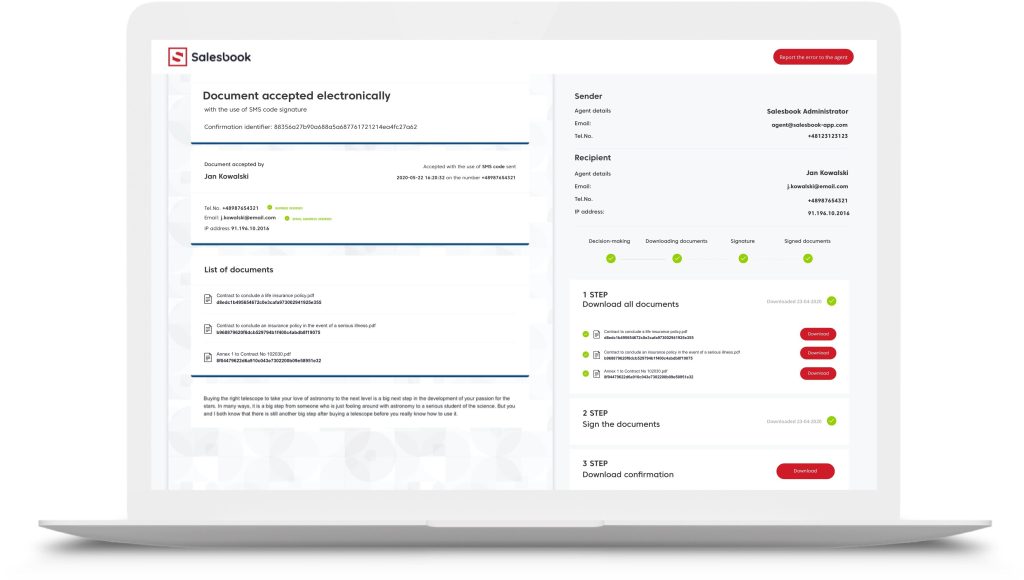
Automation
Anthony Robbins says:
“Goals are like magnets. They’ll attract the things that make them come true.”
This is exactly how the sales process works. If your goal is to increase profits, attract new customers and build a strong and recognizable brand, you cannot ignore the tools that automate the sales process steps and the work of the team.
Incompetent sellers see these tools as a threat to their status quo. The best, on the other hand, see an opportunity for even greater profit, and hence, higher earnings with less workload. The truth is that both groups are right.
Process automation is designed to allow the sales team to focus on acquiring future customers and leave the execution of repetitive tasks in the hands of the application, but also to precisely monitor the existing sales process and its control.
Due to the fact that the control takes place automatically, we can be sure that the seller will not skip any sales stage of the sales process, and that the collected data is authentic.
Salesbook allows you to significantly accelerate the sales process. Repetitive, administrative activities, such as filling in customer data in the CRM system, rewriting notes from a conversation with the customer, or sending a message with a summary of the meeting can be automatically performed by the application, which will significantly relieve the seller in his daily work, improve communication with the customer and make all the follow up actions much easier.
What’s more, Salesbook will allow to forget about the hours wasted on creating complicated offers and looking for a product or service that meets all customer needs, because all these activities will be performed automatically.
All information collected during the meeting is – in real time – sent to the CRM, and after the visit, the client will receive an automated follow up.
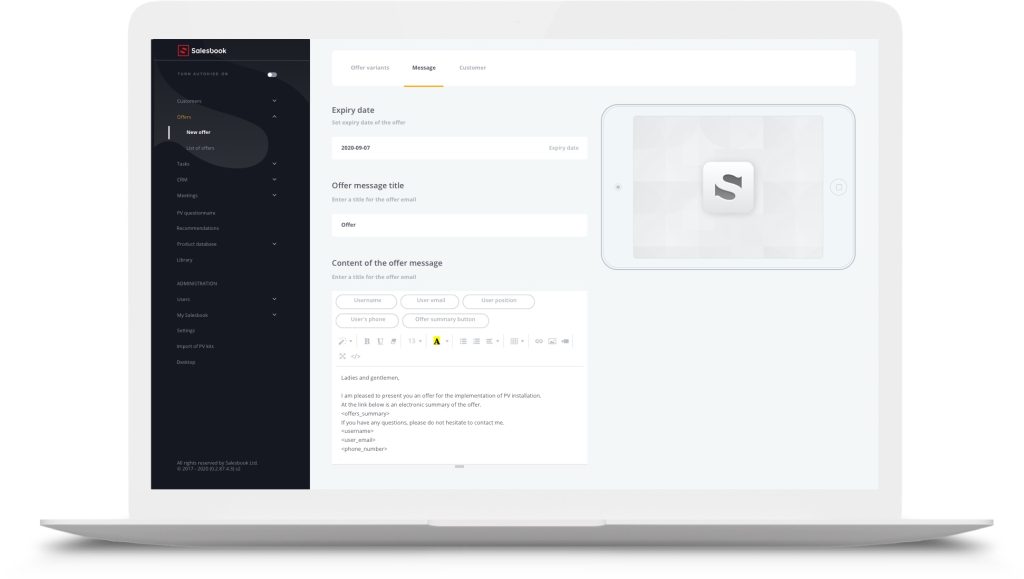
CRM
Another very important element of the good sales process according to the Salesbook Formula is Customer Relationship Management, i.e. CRM. It is important to remember that the client, together with all his preferences, behaviors, and needs, is a value for the organization.
This means that the more we know about our clients, the more value they will have for the company. We also have better insight into whether such a person is ready to make a purchase. For this, it is necessary to have a tool that will collect, analyze and manage such information in an organized and automated way.
CRM as a tool must be flexible and precisely respond to the user’s needs. If it is difficult to use and unintuitive, most likely sellers will avoid it like fire or fill it unreliably in their free time. And that’s not what it’s all about.
The CRM implemented in the company should improve communication and the sales process, and not only be a knowledge base. Agile and transparent management of customers, the sales funnel and the entire bidding process is possible thanks to this type of tool.
By standardizing the process, improving communication, and improving the customer experience, your salespeople will be able to increase the range of effective operations and acquire customers faster.
Salesbook provides sellers with a state-of-the-art tool that enables, among others:
- sending hard data obtained during the meeting at the same time to the CRM database – this gives all employees access to up-to-date data,
- checking all necessary sales information from one application,
- improving customer service thanks to the integration of the call center with the CRM system,
- automatic data collection and organization,
- precise determination of the stage at which the sales lead is, what actions have been taken and what tasks remain to be performed,
- combining CRM with a sales application – thanks to this, you gain the possibility of analytics based on hard and real data, which we obtain directly from meetings between the customer and the salesperson.
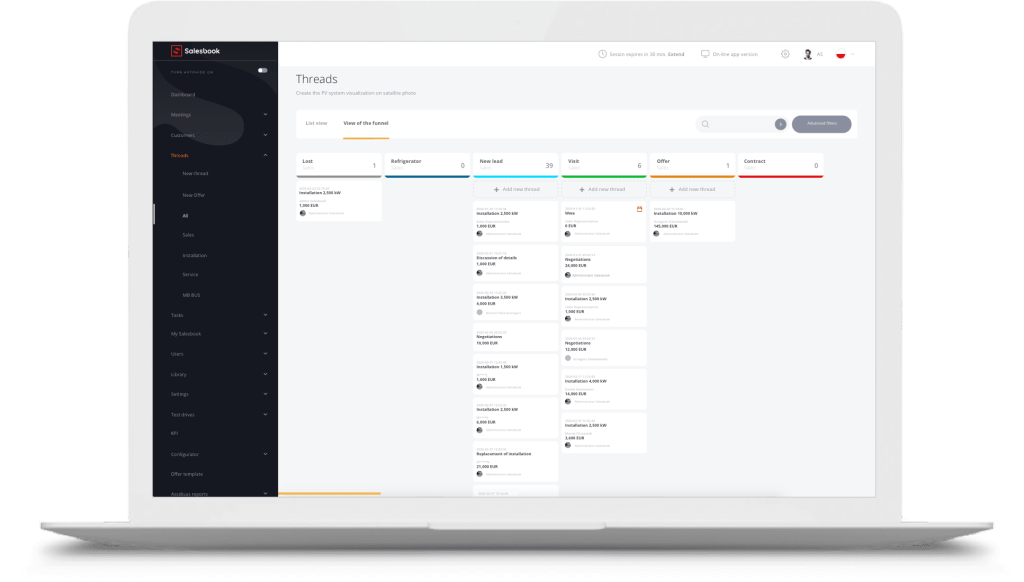
Analytics and AI
“The business side of any company starts and ends with the hard-core analysis of its numbers. Whatever else you do, if you don’t understand what is happening in your business factually and you are making business decisions based on anecdotal data or gut instinct alone, you’ll eventually pay a big price. “ Bill Gates, co-founder of Microsoft
Creating a strong sales process is a continuous work of adapting it to customer expectations, market changes, and economic factors. A process that worked well 10 years ago can now be told as an anecdote at corporate events. In order to keep up with changes and customer expectations, it is important to understand that improving the sales process is continuous work.
Salesbook allows you to enter a higher level of data analysis and make a precise diagnosis in the case of lower efficiency of salesmen. Thanks to dedicated tools, the sales department can catch anomalies occurring between the sales stages of the funnel and develop a corrective action plan.
Sellers using Salesbook are able to qualify the obtained leads more effectively thanks to the huge backup of hard data. As a result, they can focus on the most promising contacts first and achieve higher sales goals. Being aware of how the sales team works improves communication between the sales department and the head of sales.
Analyzing the results and activity of employees in Salesbook allows you to obtain a large amount of information on the effectiveness of the sales process, as well as actions that should be taken to improve efficiency. Effective management requires the manager to be vigilant and identify any anomalies that may affect sales results.
What’s more, the observation and analysis of the best sellers’ practices allows you to implement their way of working in the entire sales team. Based on data analysis, you are able to plan an effective business conversation and create a universal template for the rest of the team. Lack of control over KPIs and reports exposes your company to real losses.
You can filter the reports available in Salesbook as you like. You can search information for a specific group, selected user, or a specific date. This allows you to reach the necessary data in just a few moments.
When you set up a sales funnel in Salesbook, you also have the option to precisely define what elements need to be completed in a sales meeting to obtain the status of an effective meeting. Based on these settings, the system automatically generates reports that provide detailed information on the effectiveness of meetings. Careful analysis can drastically increase your sales opportunities.
In the Salesbook Back Office you will find, among others reports on:
- effectiveness of meetings (effective, ineffective, incorrect, completed, interrupted, saved),
- the average duration of an effective meeting,
- average time spent on specific modules during all meetings,
- location of all meetings,
- the status of offers by their type (sent, opened),
- value and number of contracts in a specific period of time,
- the number of planned subsequent actions towards the client,
- the usage status of files from the media library (which of them were used most often),
- the most common reasons for interrupting a meeting,
- the number of recommendations collected during meetings.
Additionally, the individual customer account contains detailed information about each meeting with the seller. It is even possible to record such a meeting, of course with the prior consent of the client.
All these elements allow you to fully use the potential of the collected data and improve the sales process and thus increase profits.
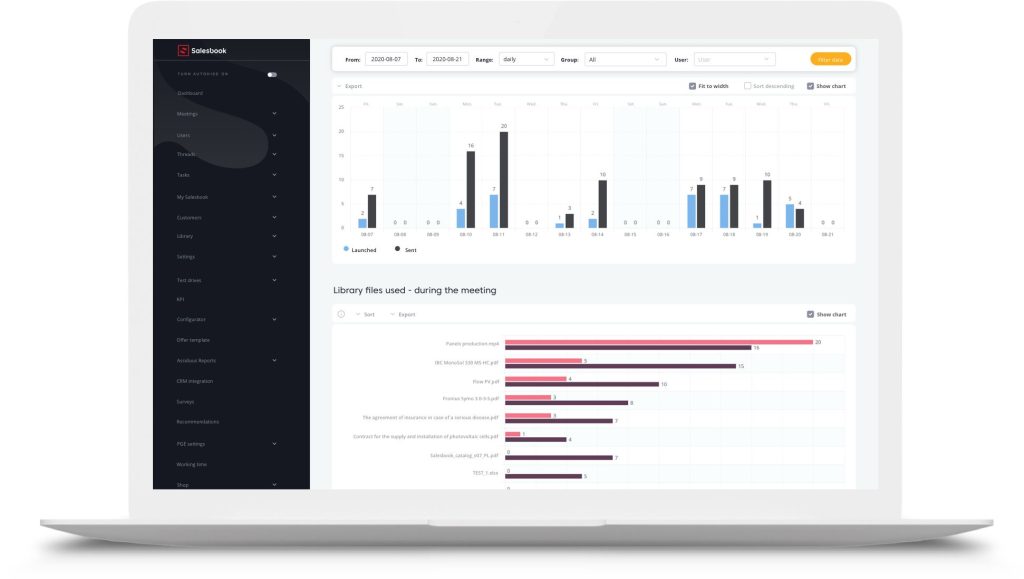
Summary
There are many elements to success in sales. The Salesbook Formula is not only a set of tools and processes – it is a work methodology that must be included in the company’s philosophy to improve a business model.
If you want to be successful, achieve the full potential of your company, close more deals and earn more, you need to build strong foundations and prepare a plan that Salesbook will help you implement effectively.
The Salesbook Formula is a solution that you get on a silver platter: a new sales process that is ready and tested by thousands of salespeople, flexible and modern tools, and data for analyzing your activities. So you don’t have to create a sales process flowchart from scratch. With all this, the ultimate goal is always successful sales.
We meet the needs of salespeople for whom the hours spent on meetings with clients, preparing sales presentation and offers, or describing the entire day of work in CRM are part of everyday life.
Thanks to Salesbook, you will learn which elements and sales stages of the process in your company are working properly, which of them need improvement, and which do not work at all and you waste time on them unnecessarily.
Inefficient business meetings and hours wasted on manually entering data into CRM make you lose money every day, and as Warren Buffet says, the most important business principle is:
“Rule #1: Never lose money. Rule #2: Never forget rule #1.”
Check what Salesbook can do!
Do you want to learn how to implement the Salesbook Formula in your sales department and increase the efficiency of your salespeople by 53%?
Sign up for a Free Demo, and our specialist will show you what the entire tool looks like from the inside and how it can fundamentally help you build a sales process and bring the quality of consultative sales closer to the quality and pace of e-commerce.
Table of Contents



